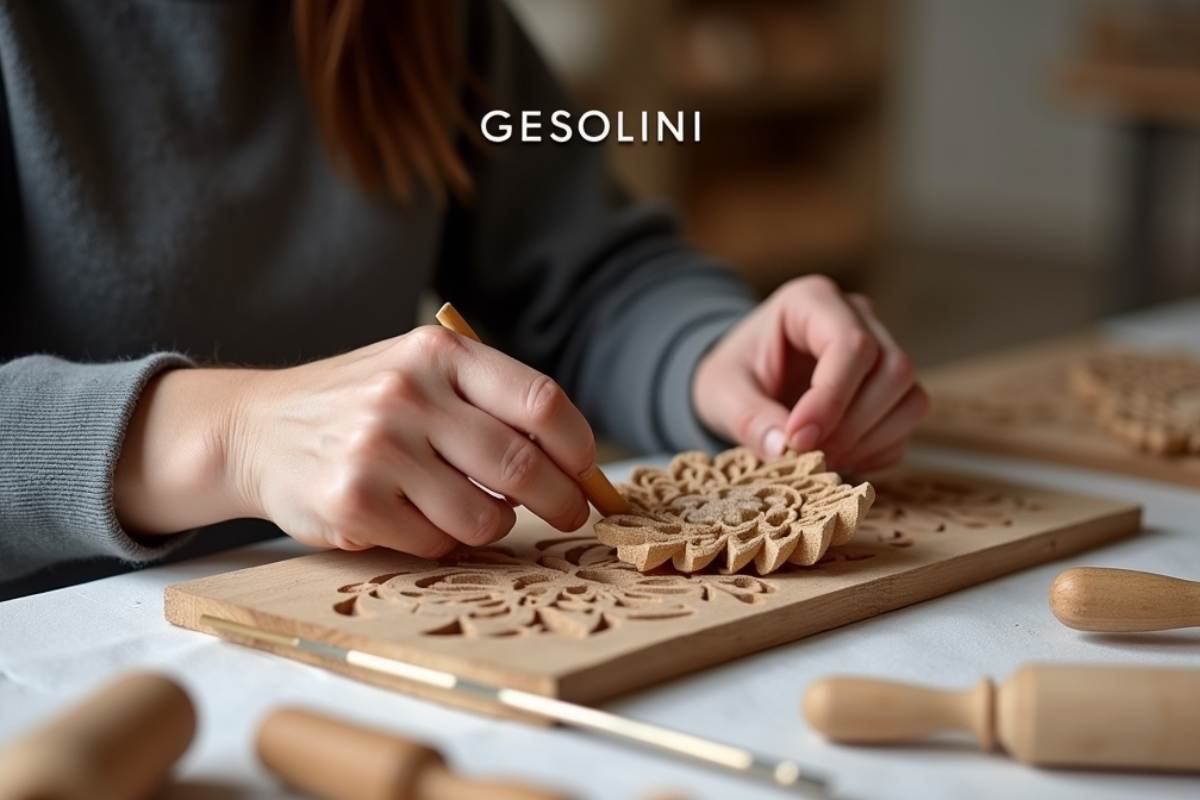Gessolini is more than a visual style but it is a sensory experience shaped by texture, tone and tradition. Rooted in Italian artistry it embraces the beauty of restraint, where every element feels intentional and grounded.
This tactile philosophy favors handmade details, natural finishes and the quiet elegance of simplicity. From plastered walls to curated furnishings it creates spaces that feel lived in yet refined.
It’s about connecting with the materials, the makers, and the meaning behind the design. In a world full of noise Gessolini speaks in a softer, more lasting voice.
What Is Gessolini?
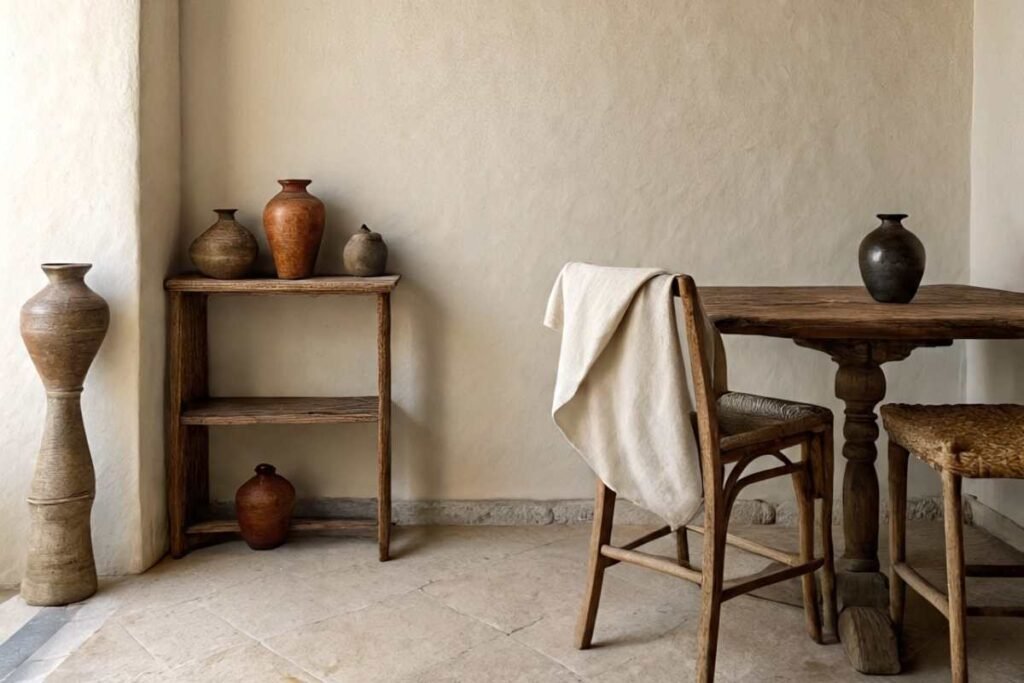
Gessolini is a design philosophy rooted in the Italian word gesso, meaning chalk or plaster reflecting its connection to texture and craftsmanship.
It emphasizes soft, matte surfaces, neutral tones and organic materials to create a calm, grounded environment. Unlike decorative excess it values visual silence but it is spaces that invite reflection and comfort.
This style often features limewashed walls, artisan finishes and tactile elements like linen clay and wood. It is a celebration of slowness and intention where beauty lies in the handmade and imperfect
The Essence of Gessolini!
Gessolini is more than an aesthetic but it is a lived experience born from Italian craftsmanship and shaped by the quiet elegance of texture.
Inspired by the Italian word gesso this design approach embraces earthy finishes matte surfaces and a refined visual calm. Natural materials such as clay, lime and stone play a central role in expressing its artisanal character.
Spaces guided by it exhibit a subtle warmth, inviting stillness through their understated charm. Rooted in cultural identity and heritage design, this style evokes a tactile dialogue with its environment.
Materiality and Texture!
Texture is the cornerstone of it manifesting through materials that emphasize touch over gloss. Lime plaster, reclaimed wood and untreated stone walls evoke a deep connection to the earth.
These elements are not chosen for spectacle but for their ability to age with dignity and enhance sensory experience. Every surface in a it space tells a story through quiet imperfections and subtle depth.
From linen drapery to handmade ceramics, tactile richness replaces ornamentation. This material integrity is central to it grounding aesthetic.
Color and Light
The color palette of Gessolini rests in soft neutrals and earthy tones that calm the eye and anchor the spirit. Shades of beige, soft white, dusty taupe and pale clay harmonize with natural light to create a tranquil interior rhythm.
Diffused lighting plays a key role, enhancing the serenity of texture-forward surfaces. Instead of sharp contrast there is tonal continuity and visual softness throughout.
Lighting is curated to fall gently on matte finishes revealing the intricacies of form. This subdued interaction between color and light defines the essence of it.
Spatial Flow and Layout
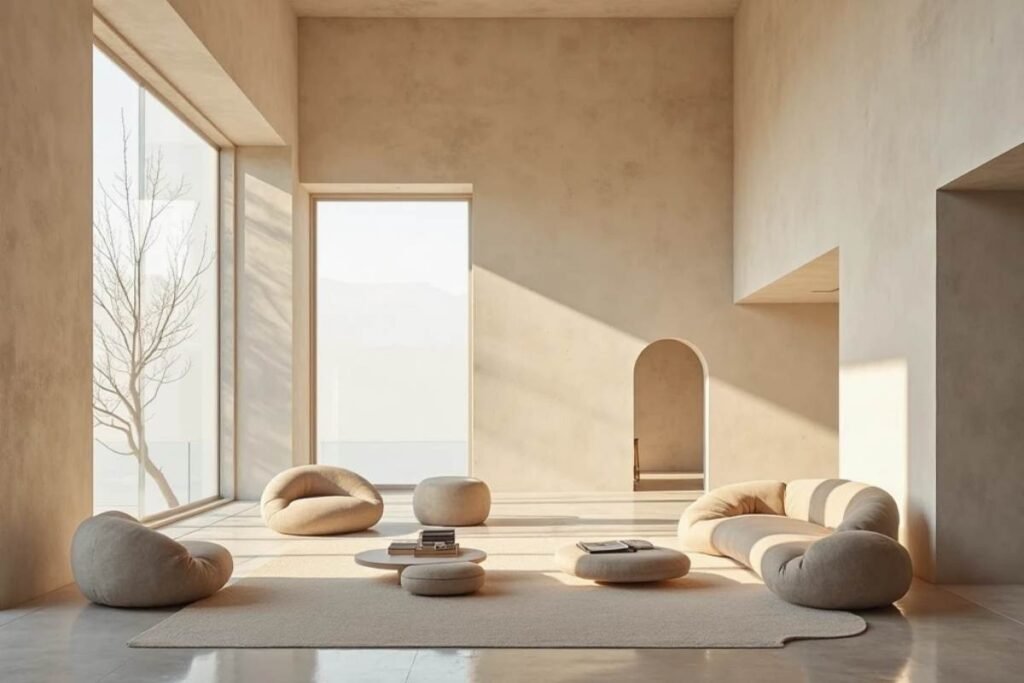
A Gessolini interior prioritizes open layouts and breathable space over visual density. Each area is organized to promote movement and mental clarity with careful attention to proportion and balance.
Objects are not crowded but thoughtfully placed to guide the eye and ground the body. Furniture pieces with rounded edges and soft curves enhance the organic spatial rhythm.
There is a visible absence of clutter, replaced with purposeful quiet. This design principle fosters calm and clarity within the spatial experience.
Handcrafted Elements!
Artisanal craftsmanship is foundational to the philosophy celebrating handmade quality over industrial precision. The presence of hand applied limewash, natural fiber textiles and carved wooden forms reinforces a personal connection to objects.
These handcrafted components embody authenticity and elevate the experience of everyday use. They represent a deep respect for traditional techniques and the artisan touch.
Handmade ceramics and woven baskets provide function while adding soul to interiors. Inhuman hands shape beauty into form.
Natural Materials in Practice
Its interiors feature a refined selection of natural materials chosen for both aesthetics and tactile resonance. Clay walls, raw stone floors, and wooden beams establish an unpretentious visual language.
These materials breathe, reflect the climate and subtly shift with light. Linen, wool and cotton are common in upholstery and drapery reinforcing the softness of the environment.
The interaction of materials creates harmony without artifice or synthetic intrusion. In every aspect, material selection underpins the philosophy of grounded elegance.
Functional Elegance in Furniture!
Furniture within the Gessolini language blends sculptural form with tactile depth, serving both utility and emotional resonance.
Pieces are often minimal in shape with rounded silhouettes and unvarnished surfaces that invite touch. Neutral hues and artisanal finishes enhance the intimacy of each object.
The use of natural textures such as woven cane, solid wood and lime washed accents create a softened presence.
Chairs, tables and shelving contribute to the ambiance without overpowering it. Furniture becomes part of the atmosphere not a statement.
Textile Expression!
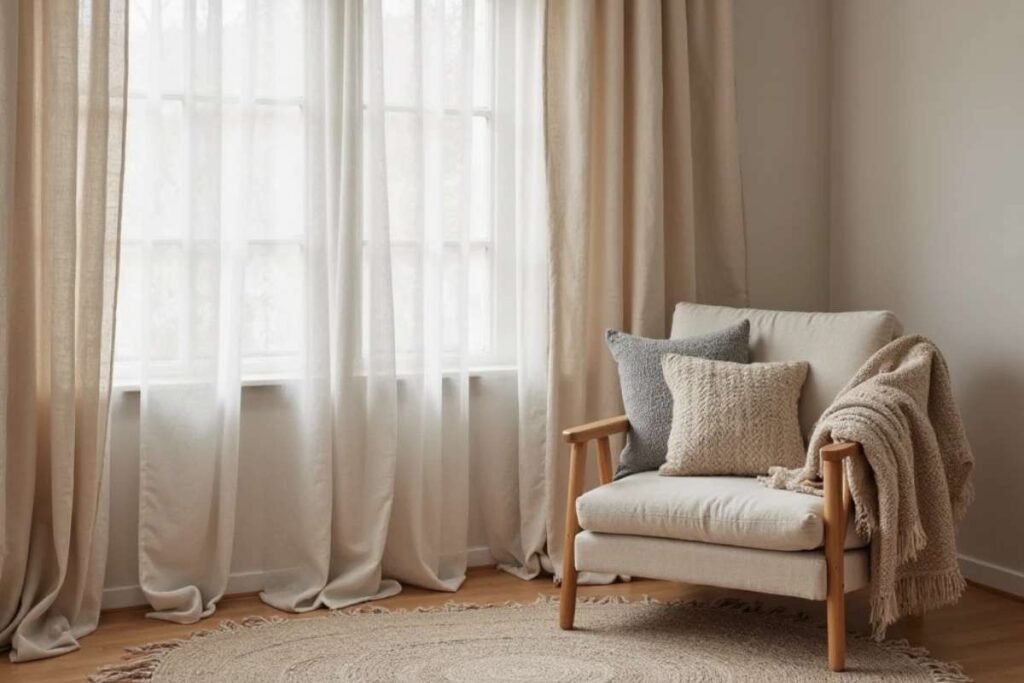
Textiles are not decorative layers but fundamental design tools that shape the sensory environment. Linen curtains, wool throws and cotton slipcovers establish a tactile dialogue between user and space.
Their muted tones and raw finishes contribute to the understated palette. Textiles absorb light and sound supporting the interior quietude.
Handwoven rugs and textured cushions add dimension while maintaining restraint. These fabric elements complete the experience with softness and visual continuity. Each textile choice speaks to intentional living.
Cultural Influence and Heritage!
It is deeply entwined with Italian heritage, reflecting values of simplicity, artisanship and connection to place. The style draws on centuries old building techniques and regional practices to inform its identity.
Elements such as lime based plaster and traditional stonework echo the architecture of rural Italian homes. Culinary heritage, family gatherings and artisanal customs influence the spatial narrative.
Cultural memory is embedded in material choice and layout. Through Gessolini the spirit of Italian lifestyle finds quiet contemporary expression.
The Role of Culinary Tradition!
Culinary heritage finds its way into the it space through the design of the kitchen and dining areas.
These spaces are organized for togetherness with handcrafted tables and natural stone surfaces grounding meal preparation.
Local ingredients, family recipes and artisanal cooking tools shape both form and function. Open shelving and linen-lined baskets reflect a culture of generosity and sharing.
The aroma of seasonal cuisine and the tactile preparation of traditional dishes reinforce domestic intimacy. In this context,] food becomes part of the design language.
Atmosphere Through Aroma and Sound!
Sensory elements such as aroma and sound are carefully considered within Gessolini to support emotional presence. Natural ventilation allows the air to carry the scents of lime, wood, and seasonal herbs.
Quiet ambient sounds like the creak of wood or distant cooking enhance a sense of rootedness. There is a conscious reduction of digital and mechanical noise in favor of organic soundscapes.
Candles, herbal infusions and slow simmering dishes contribute to the olfactory experience. These subtle cues deepen the lived quality of space. The atmosphere is shaped as much by absence as presence.
Emotional and Sensory Experience!
It fosters emotional stillness and sensory attentiveness through its deliberate design choices. Each element within the space invites engagement without overwhelming.
The texture of walls the softness of linen and the scent of natural wood cultivate a deep sense of well being.
Visual minimalism supports emotional clarity allowing the individual to reconnect with their inner rhythm.
By removing distraction and excess, space becomes a container for calm reflection. Gessolini lived through sensation, not spectacle.
Gessolini in Contemporary Lifestyle!
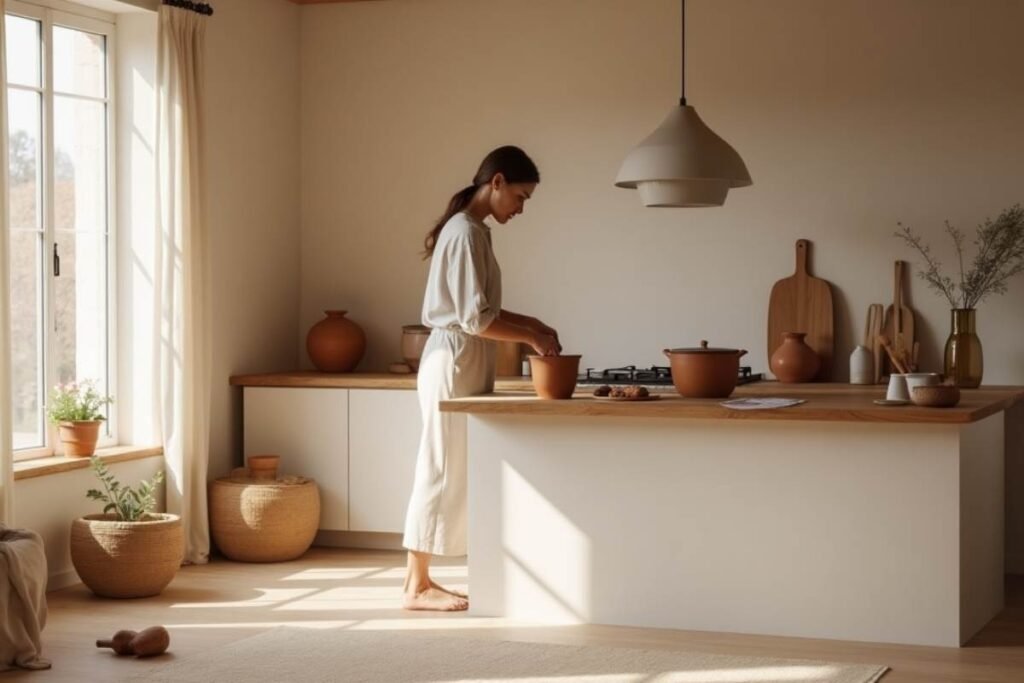
As a lifestyle expression it encourages a shift from consumer driven spaces to environments shaped by meaning and care.
It emphasizes handmade over mass produced, tactile over glossy and calm over stimulation.
Design choices support daily rituals but it is from preparing food to resting in silence. The home becomes a sanctuary of grounded elegance created through restraint and thoughtful presence.
There is no chase for novelty or trend. Instead there is a foster lifestyle rooted in material honesty and emotional resonance.
Conclusion
It is an invitation to inhabit space with awareness, to design with purpose and to choose objects with soul. Every surface, scent and shadow serves a role in creating an emotionally resonant atmosphere.
Through tactile materials and thoughtful layout it nurtures a return to simplicity and human connection. The repetition of natural forms, quiet hues and handcrafted textures embodies a holistic way of living.
Gessolini allows space to breathe and in doing so helps us do the same. It is not just about design but it is about presence.
What materials define the Gessolini aesthetic?
Natural plaster, reclaimed wood, linen and stone are core materials that bring softness, texture and sustainability into the space.
How does it influence food presentation?
Chefs often use artisan ceramics, earthy tones and minimal styling to create an authentic tactile dining experience.
Can it work in smaller interiors?
Yes, its neutral tones, organic textures and minimalist layout make even compact spaces feel open and calming.
What characterizes its style of furniture?
Rounded forms, muted colors and handmade finishes give furniture a grounded timeless presence with sensory appeal.
How does it appear in kitchens and dining areas?
With limewashed walls, wooden shelves and soft lighting, these spaces become warm, intentional and inviting.
What cultural values are reflected in Gessolini design?
It honors Italian traditions of slow living, family heritage and appreciation for handcrafted, meaningful elements.

